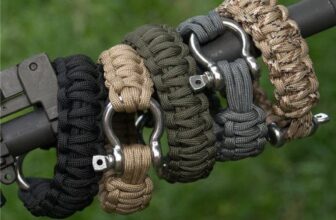
Start making plans for communicating after a crisis today, otherwise, you won’t have any idea what to do when chaos ensues. Think about the consequences if the tiny mobile device in your jacket pocket broke down. Imagine how terrible it would be if the reliable telephone you had put on the apartment wall never worked again. You should therefore start considering efficient channels of communication right now. These tips are tried-and-true methods for keeping in touch with family and friends. Most of them don’t rely on the convoluted phone networks supplied by phone and Internet providers.
Satellite Phone
When all phone networks are down, a satellite phone will function perfectly. This is because the satellite phone uses different networks from regular phones. Instead, it relays a signal to a satellite, which then establishes contact with the device you want to communicate with. They are pricey, and you’ll probably only ever need them in two situations (when society collapses completely or when you’re abandoned in the wild).
Walkie-talkie
We are familiar with two-way radios, also known as “walkie-talkies.” Due to its non-phone network operation, the two-way radio is yet another amazing tool for establishing communication with loved ones.
You can use these gadgets to communicate with people up to 80 kilometers away because they have a large operational range. They are a fantastic addition to a bug-out bag or survival gear because they are cheap, lightweight, and have a long battery life. If you’re interested in doing all you can to guarantee you can continue communicating after a disaster, then a two-way radio set might be one of your best bets. Inexpensive and proven in disasters, they could easily help save your life.
Ham Radio
A two-way radio is much easier to operate than a ham radio. However, they work exceptionally well in catastrophic circumstances, which is why the armed forces and many emergency response organizations utilize them. Not to mention that a scanning device connected to your radio will help you keep up with local news. A license is necessary to use a ham radio, although they are very easy to obtain.
Once you obtain a license, the friendly community will be ready to help you learn how to use a ham radio and will explain its practical applications for survival.
Flares
It might be hard to communicate with others via power-reliant systems in a real crisis.
Flares are quite useful for this reason. You can use flares to alert folks kilometers away that you’re in danger. Since a flare is a global signal of distress, if anyone sees it and is nearby, they can offer assistance.
Additionally, there are hand-held flares that you can use for communication without necessarily drawing attention to yourself. Smoke signals are another option.
Mirrors
Another tool for survival communication is a mirror. Again, you’ll want to construct pre-established messaging so that when you communicate with those you know can understand your message, you can be confident they can. Knowing SOS and the methods of utilizing your mirror are essential skills. Mirrors are portable, affordable, and functional so long as there is sunlight. A CD can substantiate it if you don’t have a mirror.
Chalk
You are aware of the sidewalk chalk you purchased for your kids? It is a fantastic tool for survival. One benefit is that it is simple to wash off. Family and close friends can easily rub or wash off a message that has been written in code.
It’s fantastic since you can use it to make loud distress cries. You may write a huge sign with some chalk that is visible from a great height. It also has a very long shelf life, is battery-free, and is lightweight. Additionally, it can be color-coded so that specific colors of chalk are used for specific purposes that only you and a restricted number of people are aware of.
Conclusion
If you don’t already have a plan of action in place, all of these recommended methods of communication during a survival situation are completely useless. Discuss with the people you care about how you would contact them if all conventional means of contact were lost.
Plan your escape destinations and meeting locations to stay connected in the event of an emergency. Stay prepared and safe!




